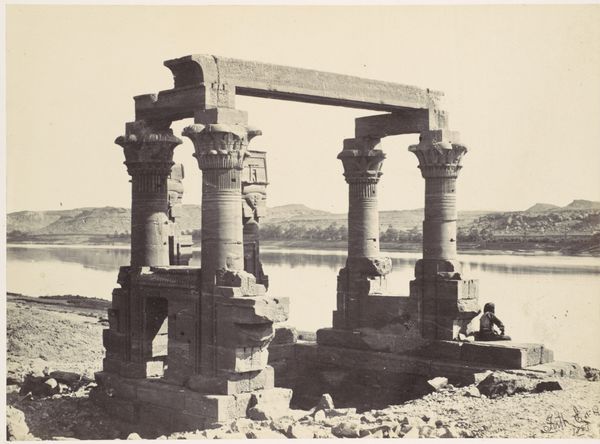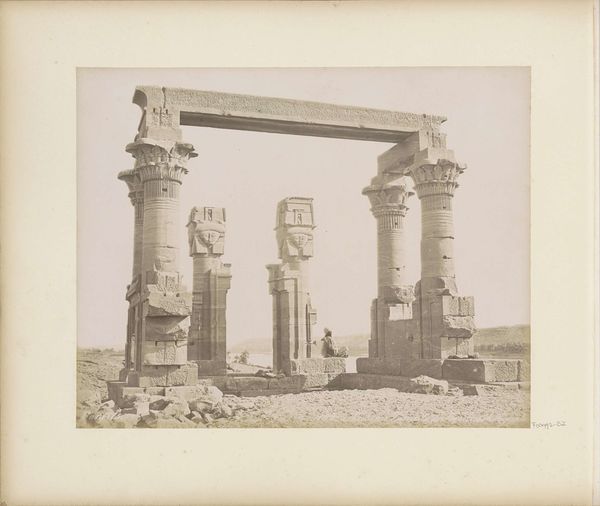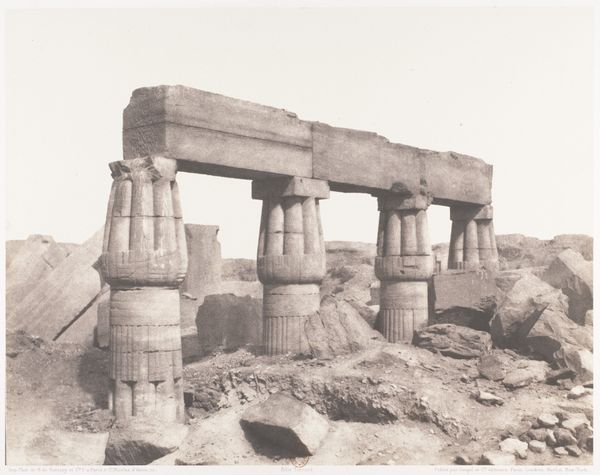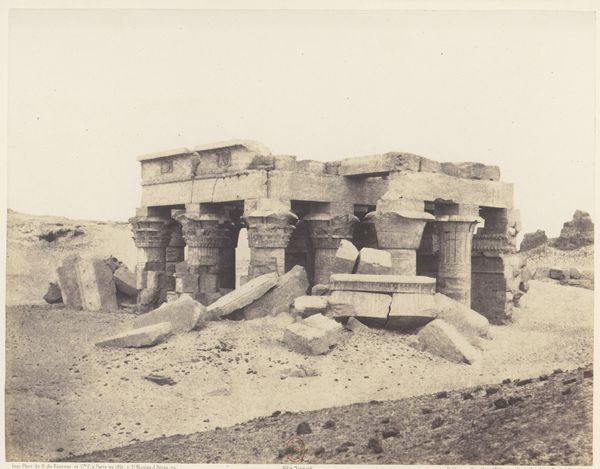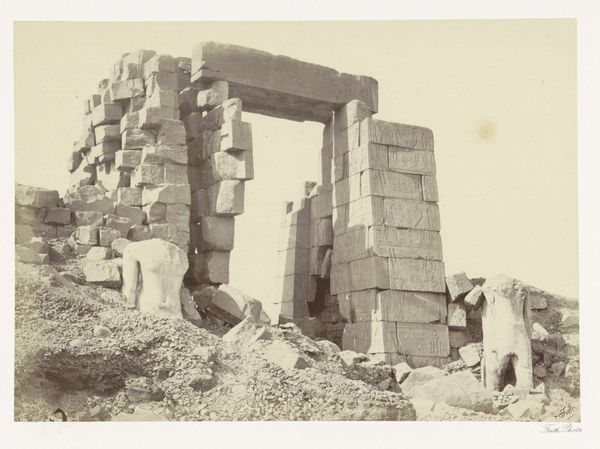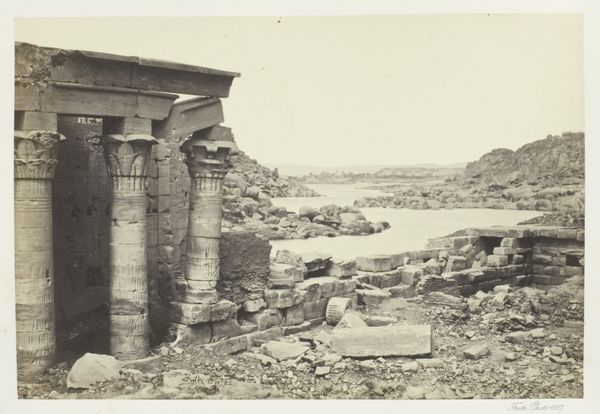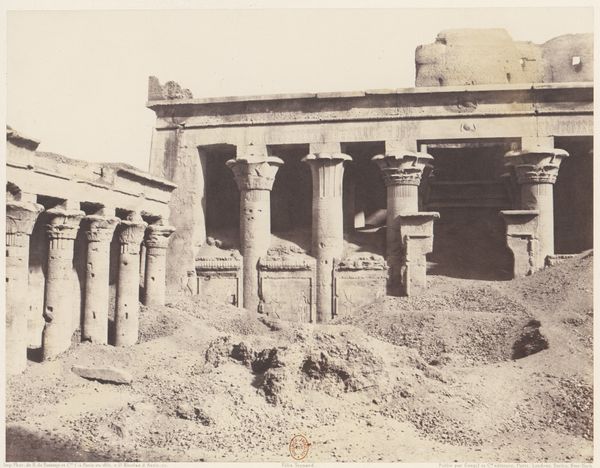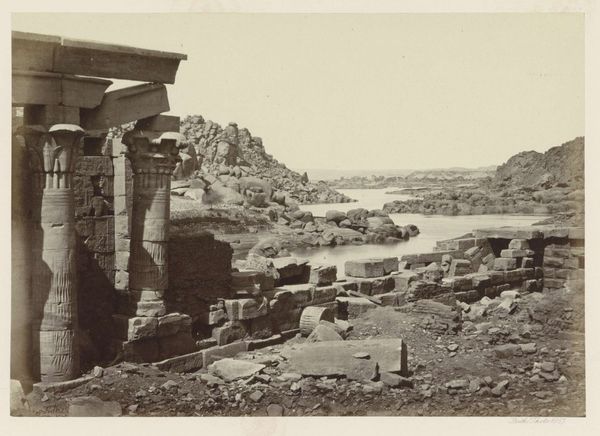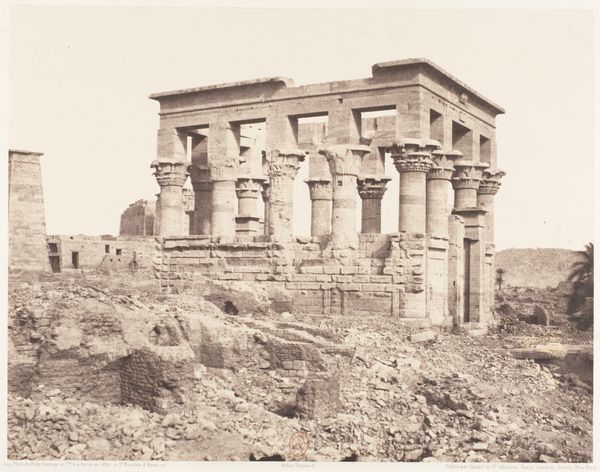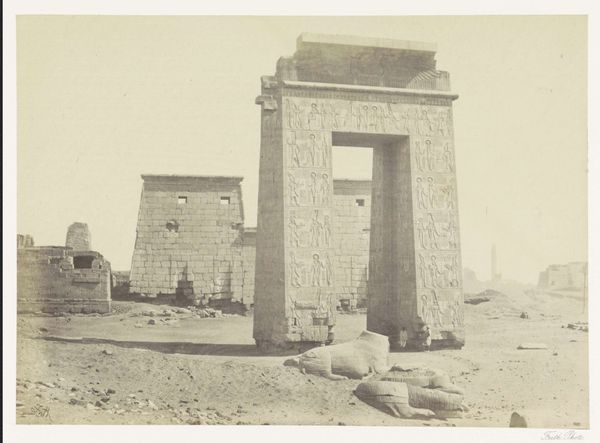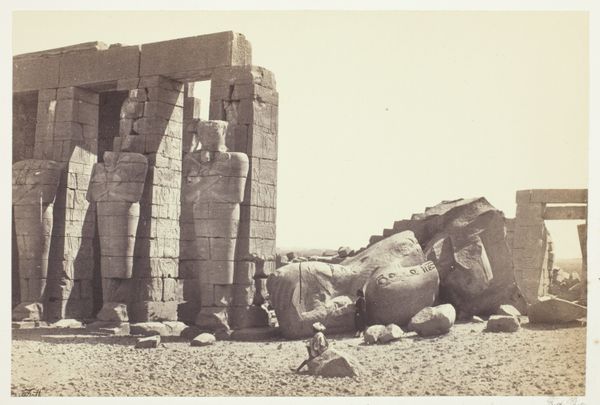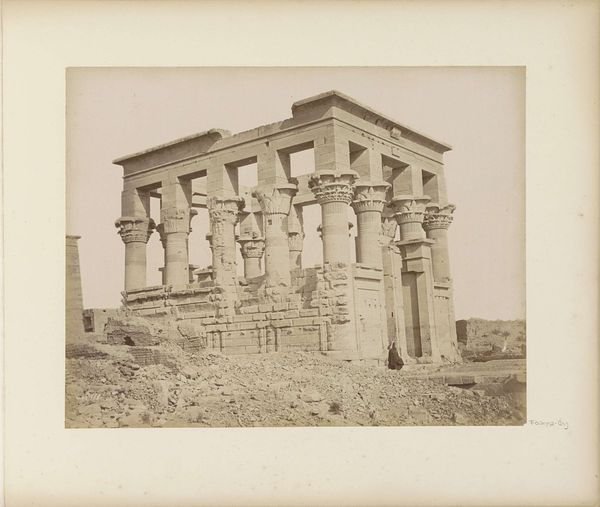
daguerreotype, photography, site-specific
#
landscape
#
daguerreotype
#
outdoor photograph
#
outdoor photo
#
form
#
outdoor photography
#
photography
#
historical photography
#
geometric
#
ancient-mediterranean
#
orientalism
#
site-specific
#
line
Dimensions: height 165 mm, width 225 mm
Copyright: Rijks Museum: Open Domain
Editor: Francis Frith's daguerreotype, "Kiosk van Kertassi," taken before 1859, showcases the ruin of an ancient structure. There’s a real sense of stillness here, almost like the photographer wanted to capture a moment frozen in time. What does this piece evoke for you? Curator: This photograph exemplifies the Orientalist movement's fascination with the Near East, specifically ancient Egypt. Consider the sociopolitical climate; photography was relatively new, offering Europeans a seemingly objective glimpse into distant lands, reinforcing power dynamics between colonizers and colonized. Frith wasn't just documenting a ruin; he was presenting a carefully curated vision of a "romantic" past, a narrative often shaped by European expectations. What elements contribute to this romanticized view, in your opinion? Editor: I guess the stark contrast between the monument’s grandeur and its state of decay contributes, highlighting the passage of time. Also, its isolation against the backdrop of the serene landscape...it all feels very deliberate. Curator: Precisely. Frith’s composition, the choice of vantage point, the angle of light - all are meticulously chosen to enhance the monument’s otherness. Think about how images like these, widely circulated in Europe, fueled imperial ambitions and shaped perceptions of Egypt and its people. It invites us to think about whose story is being told, and for what purpose. Editor: It’s interesting how a single photograph can be layered with so much history and perspective. It really encourages questioning what's in front of you. Curator: Exactly. And understanding the historical context allows us to critically examine the photograph not just as a record of the past, but as a cultural artifact actively shaping our understanding of it.
Comments
No comments
Be the first to comment and join the conversation on the ultimate creative platform.
